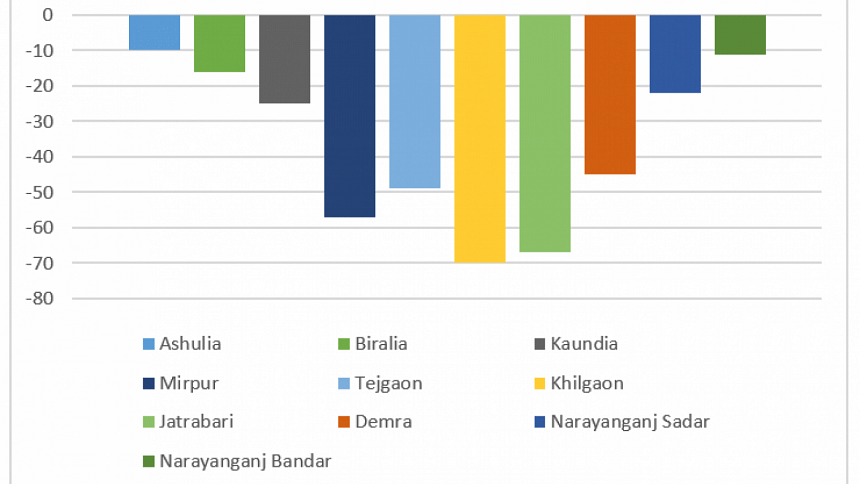Groundwater Depletion in Dhaka: Too little too late?

Dhaka is a megacity with an ever-rising population. Currently, Dhaka has 21 million people and due to urbanisation, this can reach up to 32 million by 2035. Rapid uncontrolled urbanisation creates many problems and one that was never given priority is groundwater depletion. Many citizens have no idea how they get their water, about the groundwater levels and what would happen if this water suddenly disappeared.
According to the annual report of Dhaka Water and Sewerage Authority (WASA) from 2018-19, Dhaka has a daily water demand of 2.45 billion litres and 78 percent of the water demand is met by extracting groundwater from underground aquifers. Dhaka WASA currently has 887 deep tube wells for extracting groundwater. There are also thousands of private deep tube wells to extract water. As for the remaining 22 percent, surface waters of various rivers and lakes cover it.
The rivers in and around Dhaka city include Dhaleswari, Turag, Tongi Khal, Buriganga, Balu, Bangshi and Shitalakshya River, most of which are heavily polluted from industrial and municipal sources. This situation particularly worsens during the dry season. Dhaka WASA has four water treatment units for treating water collected from Shitalakshya River. Due to the deteriorating quality of the raw water coming through its intake structure at Sarulia, the Sayedabad water treatment plant is facing serious difficulties in treating drinking water during the dry season.
This dependency on groundwater over a long period has taken a toll on the groundwater level in Dhaka. According to 2030 Water Resources Group, the annual water decline rate for Dhaka city is 3 metres per year. If the demand increases, which is likely, then this can reach up to 3.9 metres per year this year and 5.1 metres per year in 2030. If any preventive measures are not taken groundwater levels will fall to 100 to 150 metres by 2050.

Dhaka, with its low unpaved area, has limited natural groundwater recharge. This dependency on rainwater will help the deep aquifer to hold on to the limited water it has. Groundwater weighs down the Earth's upper crust. If the groundwater falls below a certain depth then the crust is lifted. This shift aggravates the fault line, which in turn can trigger earthquakes in the area. If groundwater level drops by a certain depth, it can be one of the major causes of an earthquake. A major earthquake of 7.0 magnitude on the Richter scale will cause havoc in a congested city like Dhaka and will cost many lives.
The UN Sustainable Development Goals 6, 9, 11 and 12 aims at clean water and sanitation; industry, innovation and infrastructure; sustainable cities and communities; and reasonable consumption and production, respectively. If we want to achieve the goals we have to deal with the major groundwater problems that we are on the verge of facing. Cape Town, in 2018, faced a similar issue when the city was days away from being the first city in the world to run out of water.
Concepts like rainwater harvesting, artificial aquifer recharge, greywater recycle, water footprint concept and water audit should be introduced and implemented especially at the industry level to tackle the water challenges. Rainwater harvesting has been a popular go-to option for coastal cities. As Dhaka experiences high amounts of rainfall, rainwater harvesting can be implemented as a supplementary option to reduce pressure on groundwater. Right now, excessive rainfall leads to water logging in Dhaka. Existing households with private deep tube wells should adapt rainwater harvesting to compensate for the water extraction. Zero Liquid Discharge is another option that can be tried out to some extent in industries. If we don't implement the above mentioned ideas and control our excessive water consumption then we will face water scarcity in the near future.
Syed Mohaiminul Islam is a Research Engineer currently working at RAiN Forum, a non-profit organisation that specialises in sustainable water management.

 For all latest news, follow The Daily Star's Google News channel.
For all latest news, follow The Daily Star's Google News channel. 



Comments